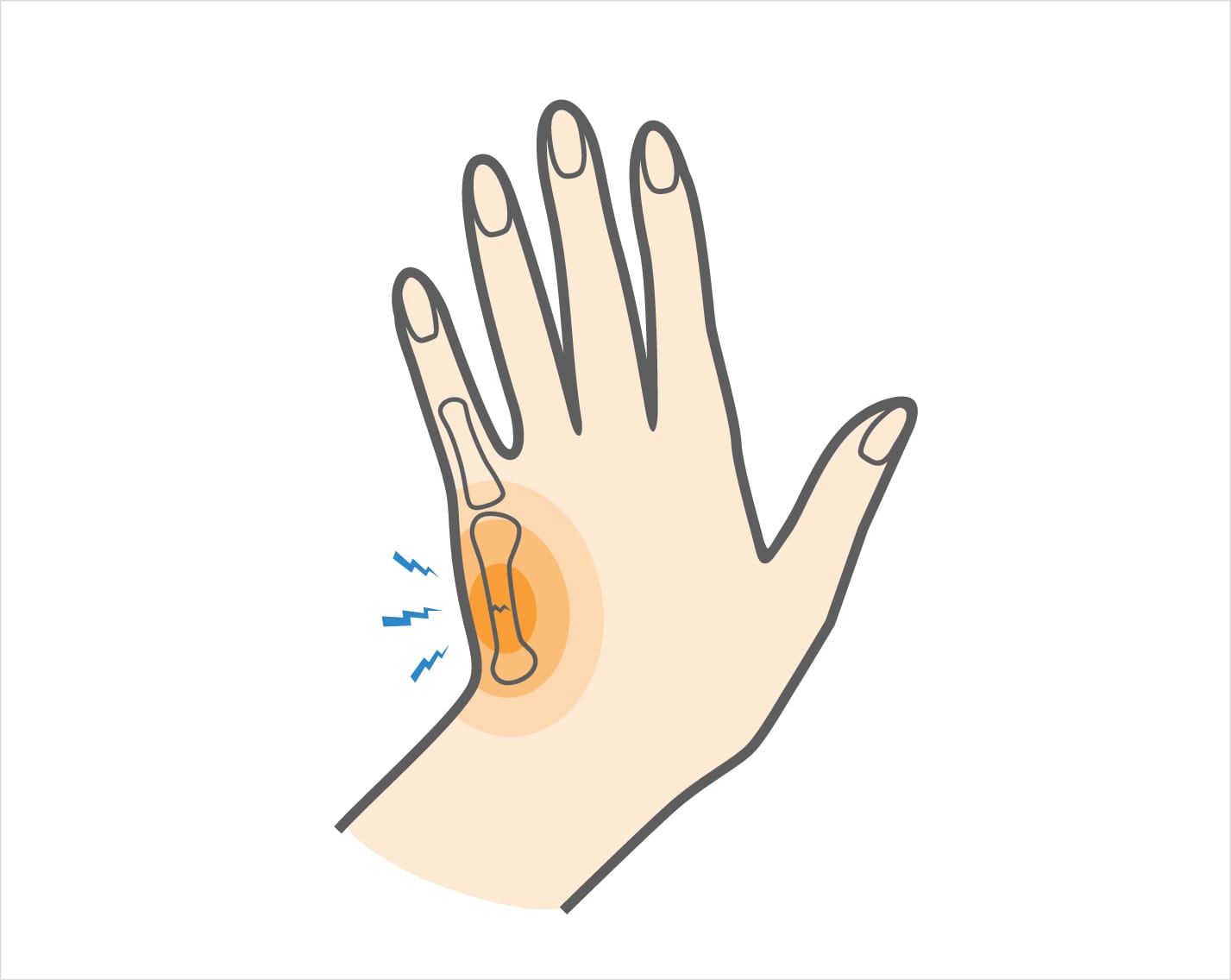The metacarpals are the five long bones that make up the palm of the hand. These bones can break, or fracture, from a trauma to the hand. The fractured ends of the bone can remain aligned, or be forced out of alignment. Fractured metacarpals cause pain and other symptoms, and require treatment to ensure the hand heals properly.
Boxer’s Fracture Causes, Symptoms & Treatment Options
The metacarpals are the five long bones that make up the palm of the hand. These bones can break, or fracture, from a trauma to the hand. The fractured ends of the bone can remain aligned, or be forced out of alignment. Fractured metacarpals cause pain and other symptoms, and require treatment to ensure the hand heals properly.
Overview
Overview

What causes Boxer’s Fracture?
Athletes are at risk for boxer’s fractures. The injury is typically caused by a fall onto the hand, direct contact with an opponent on the playing field, or some other trauma to the hand, like punching. Older people with osteoporosis (decreased bone density) are also at greater risk for this injury.
Boxer’s fractures are most common in these sports:
• Boxing
• Martial Arts
• Football
• Basketball
• Hockey
• Rugby
Symptoms
The first metacarpal, the one closest to the thumb, is the most likely to fracture. Athletes typically experience sudden pain upon injury. Other common symptoms include:
• Swelling
• Tenderness
• Inability to move finger
• Deformity (where the finger looks rotated or crooked) if the fracture is displaced
• Bruising (black and blue discoloration) due to bleeding from the broken bone
When to see a doctor
If you have symptoms of a boxer’s fracture, you should see your doctor or go to an emergency room facility as soon as possible. Your doctor will ask about your injury and perform a careful examination of your hand looking for swelling, a limited range of motion, among other symptoms. X-rays may be ordered to provide a more detailed diagnosis about the extent of the fracture and alignment of the bones.
Non-operative treatment
Most boxer’s fractures can be treated without surgery. If the fractured bones are out of alignment, your doctor will carefully push the bones back into alignment. Conservative treatment typically also involves:
• Immobilizing the broken hand, securing the finger to its neighbor with buddy taping or splinting, or casting
• Moving the fingers left free of the splint or cast to prevent stiffness
• Taking x-rays intermittently to check the fracture alignment
• Starting physical or hand therapy after the cast or splint is removed
Try these exercises to help address your condition:
Below is a PDF of the exercise program.
Surgical Treatment
If the fractured ends of the metacarpals cannot be successfully aligned through conservative treatment, then surgery may be needed. Open fractures where the bone punctures the skin also require surgical repair. Wires, pins, or screws may be used to secure the fractured metacarpal together.
Recovery
Following surgery, wearing the cast or splint according to your doctor’s guidance is critical, as some function of the finger may be lost if the finger moves during the healing process. Your doctor can also advise you on hand exercises to prevent stiffness and expedite your recovery.

